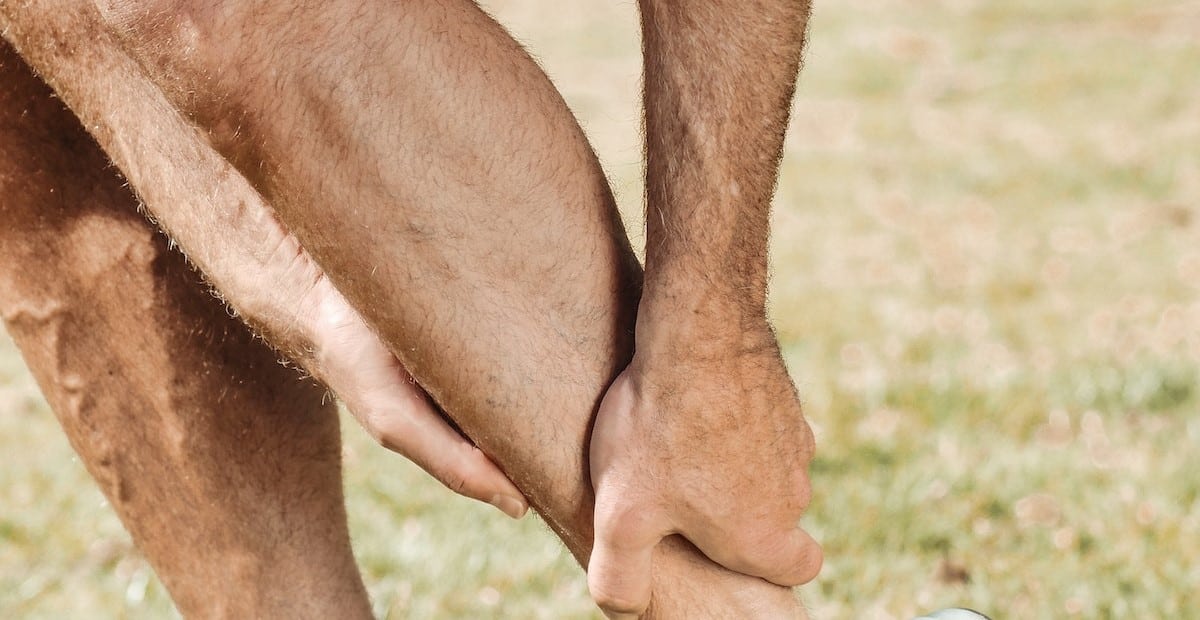
Contents
Shin splints can be a life-changer, but they don’t need to be – let’s find out how to get rid of shin splints today.
Medial tibial stress syndrome, anterior shin splint, the tibialis posterior tendon, tibialis anterior muscle… why does everything sound so complicated?
The problem here isn’t just that it’s hard to read up on medical advice from time to time, for more reasons than terminology (time, patience, so on) it’s that it can lead us into thinking that prevention and solution are just as complex.
Thankfully, that couldn’t be further from the truth.
Shin splints are a horrible thing to suffer from. Common in beginner runners, shin splints usually manifest when the runner has changed intensity, isn’t warming up properly and is generally affecting the area of the body with severity.
While there are a range of methods for both stopping and fixing, we’re going to look at one simple way to help – we’re looking at tape for shin splints.
Let’s roll.
Shin Splints?
Some more info, maybe it’ll help –

”Shin splints, or medial tibial stress syndrome, occur when the muscles, tendons, and bone tissue surrounding the shinbones become inflamed. You may experience discomfort and soreness where the muscles connect to the bone along the front or inner edge of your shinbone, or tibia. The pain may be dull, sharp, or throbbing.” – healthline, 2020.
Taping the problem
Whether it’s from anterior shin splints (front of the lower leg) or posterior shin splints (inside edge of the lower leg), shin splints are a nasty business. Thankfully, tape can help, with great effect. Tape can –
- ”Adjust to the proper footwear for foot type
- Run on softer surfaces
- Correct form
- Stretch sufficiently prior to activity
- Massage
- Decrease stride length
- Avoid running on hills, especially downhill
- Use the KT Tape arch support application
- Thorough calf stretching
- Mix up cardio workouts; cross-train.”
All of this help to promote the healing process and keep your pain under control. That’s why tape is so worth it – it’s cheap, yet it gives you so many benefits.


Taping technique
For different techniques, you should check out Kinesiology Taping Techniques, involving anterior shin splint pain relief, Anterior Tibialis for Muscle Support for larger taping areas and Taping for Trigger Points to find knots and promote circulation around certain areas.
Conclusion
No matter the area, no matter the pain, taping will help to some degree. And to think it’s so cheap, and that there are loads of varieties, you have so much option. And this is the best thing of all – having so many different approaches to accommodate the complexity of your body, the sensitivity of injury and the fragility of even the smallest of muscle areas, well, it’s game-changing. And I love every developer that’s ever put out any product in this way.
The fitness industry needs approaches like this, and you need to take advantage of them.
FAQs
What does kinesiology tape actually mean?
Kinesiology means. the study of the mechanics of body movements. So this tape concerns movement enhancing.
What is anterior shin pain?
Anterior shin splints, also known as medial tibial stress syndrome (MTSS), and are the most common cause of anterior shin pain. The causes of shin splints can be many and multifaceted. Overuse in activities like running, jogging, or cycling can result in various types of inflammation.
What purpose do primarily the anterior tibialis serve?
While the tibialis posterior serves to point the toes and foot downwards (plantarflexion), muscles on the front of the leg (primarily the anterior tibialis) serve to point the toes and foot upwards (dorsiflexion)
How does the tibialis anterior work?
As we walk or run, the tibialis anterior slows and steadies the motion of the foot as it hits the ground and lifts the foot during the swing phase of gait to prevent the toes from dragging the ground and prepare the foot for heel strike.
What exactly are shin splints?
The colloquial term shin splints refers to leg pain that arises from a variety of sources, such as arch strains, tendinitis, compartment syndrome, or stress fractures of the tibia or fibula.